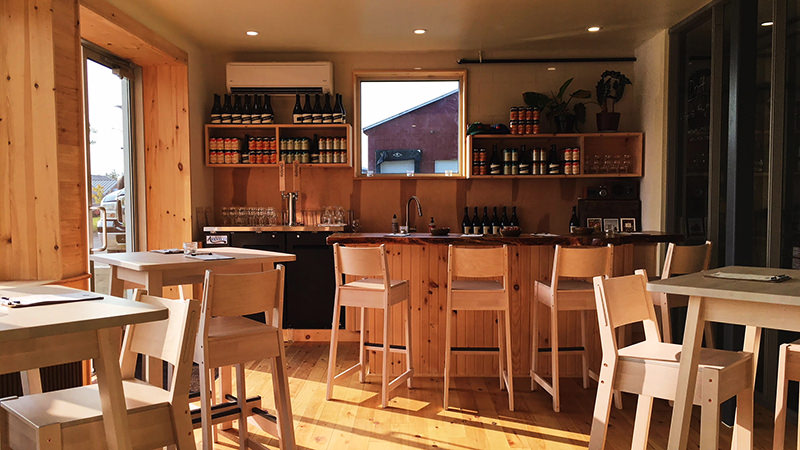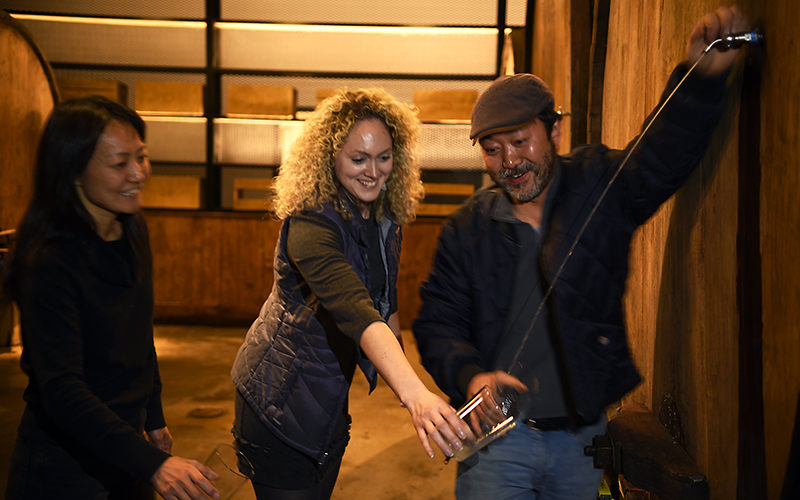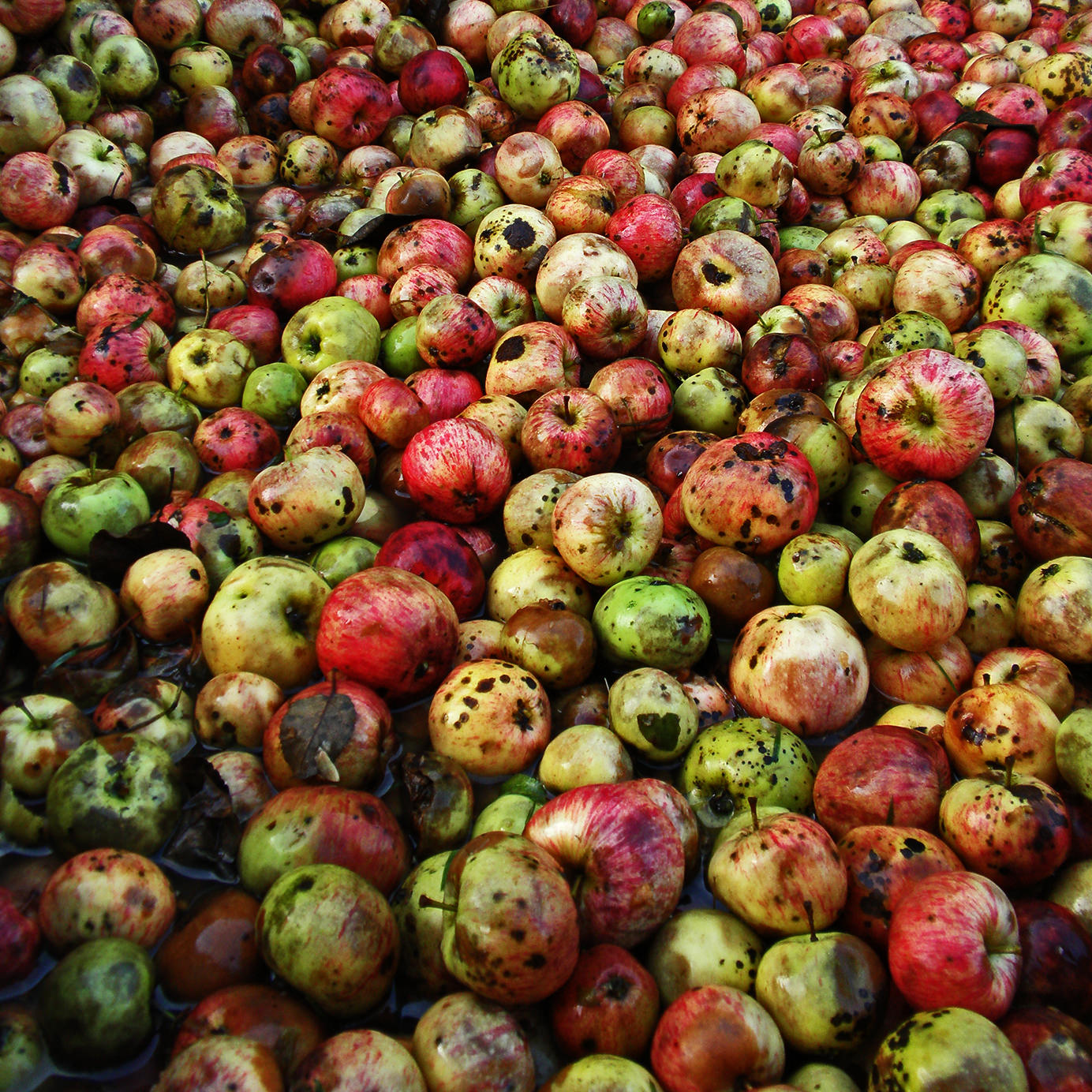Wassail wasn’t only the first all-cider bar in New York City — it was one of the most acclaimed spots in town. The design was “upscale tavern,” with rich woods and a gorgeous white marble bar top. It offered dozens of obscure ciders on tap and hundreds more in bottles. The New York Times’s restaurant critic Pete Wells gave its all-vegetarian food menu a glowing review, noting, “After circling back again and again … I’ve fallen under cider’s spell, and Wassail’s, too.”
Yet Wassail whimpered to a close earlier this year, just two-and-a-half years after it opened.
If a single, high-quality cider bar couldn’t cut it in the largest, wealthiest, most food-obsessed city in the country, how exactly can cider expect to enter the American mainstream?
For some reason, craft cider just can’t get a foothold in the market the same way craft beer has over the last few decades. There are currently around 6,000 breweries in America, raking in nearly $100 billion per year. The thirst for interesting craft beer is relentless and seemingly unstoppable. Every weekend in countless cities, beer geeks line up outside breweries to buy cans of juicy New England-style IPAs. Every September, over 60,000 beer nuts attend the Great American Beer Festival.
Meanwhile, there are around 500 American cideries, reeling in less than a billion dollars a year, and that’s if you include perry (pear-based cider) and sake (rice wine).
It really doesn’t make much sense. Cider is a perfect fit for this era. In a way it’s more hand-crafted than beer, often using foraged, completely local fruits. While beer geeks obsess over sour beers, many ciders are made from the same wild yeast inherent on their skins, causing tart and complex products similar to the best wild ales. Gluten-free everything is on the rise, yet cider can’t manage to fully catch on with that lame hook. What gives?
“You have to remember, cider has only been reintroduced to the U.S. as a major beverage on a large scale in the past couple of years, since around 2011 or 2012,” Luke Schmuecker, a partner in Vermont’s Shacksbury Cider, says.
It wasn’t always that way. Cider was once the drink of America, from the pilgrims — cider equipment was actually aboard the Mayflower — well into the 1800s. Back then we were an agrarian country and what grew particularly well on the East Coast was apples. (His name was Johnny Appleseed for a reason.)
Unfortunately, during the Industrial Revolution, settlers starting expanding west into areas more fit for barley, rye, and corn. People’s tastes also started to change, especially those of lager-loving Europeans who emigrated to more densely-populated urban areas.
“If you were cool and sophisticated, you drank beer — or, if you really wanted to be cool, Madeira,” explains Schmuecker. “Cider started to be thought of as a ‘poor farmer’s beverage.’”

The ultimate death knell was Prohibition. The beer and whiskey industries were (eventually) able to recover from it, but cider wasn’t for one distinct reason: There were fewer cider apple trees left standing.
You see, the best apples for making cider are known as “spitters,” as in they are so bitter in taste, you immediately spit them out. If temperance nuts hadn’t burned these cider apple trees down, then farmers uprooted them to make way for dessert apples and other fruits. It can take years if not decades for newly planted cider apple trees to become viable, making many modern farmers loath to invest.
“It took craft beer a long time to get to where it is today,” notes Ryan Burk, the head cider maker for Angry Orchard, which just so happens to be a subsidiary of the Boston Beer Company, the second-biggest craft brewery in the country.
Most cider-makers I talked to agreed that the craft cider industry is about 20 to 25 years behind where craft beer currently is. That puts us back in, oh, 1995 or so, when there were fewer than 1,000 breweries and few people even knew what “IPA” stood for.
“In order to get to where beer [currently] is, drinkers need to understand what cider is and its place at the table, and we’re just getting started,” Burk says.
Schmuecker also believes that lack of consumer understanding severely hurts cider’s popularity and growth. He loathes the term “hard cider,” as all cider is inherently alcoholic or “hard.”
Of course, here in America, “cider” is sometimes used to refer to that jug of unfiltered apple juice the overall-clad guy at the farmer’s market sells you. In Europe, a much better cider market, there is no confusion. There, “cider” is always a fermented alcoholic beverage.
“The most accurate name comes from Germany, where they call it ‘apfelwein’ or apple wine,” Schmuecker says. “That at least gives you an understanding of what you are drinking. The problem is in the U.S., cider is made like wine and sold like beer.” Indeed, you’re more likely to find cider in the beer aisle or as one of the taps at a beer bar than in a wine shop or fancy restaurant.
The government does cider no favors, either, in how it limits sale and distribution. In Connecticut, for instance, you can’t sell cider in grocery stores. Until recently, New York didn’t even have a classification for cider — producers simply had to choose if their cider was a “wine” or “beer.” Meanwhile, the TTB says if you make a cider that is too carbonated (seriously), it has to be taxed like wine.
Some cideries have simply learned to accept these harsh realities in order to be more fluid in who they try to sell their product to.
“We feel that consumers now think of drinking from sensory experiences,” David Rule, the vice-president of Austin Eastciders, says. “They don’t think in categories. They think about what we call ‘usage occasions.’ ‘What am I going to do with that drink?’ I don’t think many people today are going, ‘I want a vodka cocktail tonight’ or ‘I want a light beer today.’ The truth is, most everybody buys wine, most everybody buys beer, most everybody buys spirits. They just just buy them at different frequencies.”
Rule feels his company’s cider can appeal to everyone, even though it’s one of the more seemingly “beer-like” ciders around, accessibly packaged in cans. He appeals to wine lovers by showing how cider’s production methods are similar, and how it likewise offers tannins, astringency, and is great for food pairings. He thinks a cider like Austin Eastsiders’ Blood Orange can appeal to cocktail drinkers (“It operates like a Mimosa in a sensory experience,” he says.) And beer fans might like Hopped or any of his fruited ciders.
He thinks one of the key reasons cider hasn’t quite taken off is that for so long the only cider available was a super-sweet version, something people couldn’t possibly drink all night long the way they drink beer or wine. Even worse, he believes, is the scourge of faux-cider nonsense like Redd’s Apple Ale.
“I’m not sure if these sweet ciders are good or bad,” Peter Yi says. “Time will tell. There were once a lot of sweet wines made with blackberries and cherries and peaches. Remember Riunite? All those disappeared after a while, though.”
“Similarly, right now, there’s a feeding frenzy for sweet cider. But I feel the future of hard cider is going to be dry,” Yi says.

Yi is banking his entire life on being right about that. Last year, he opened a massive new cider bar in New York City, called Brooklyn Cider House.
Yi had been in the wine business for nearly 25 years. A few years back he was in San Sebastian, Spain tasting through Txakolí, a local Basque wine, when a friend invited him to visit a local cidery.
“It was a lively atmosphere. Like a celebration,” he explains. “I sat down and had this incredible experience with Basque cider and food. Everything finally clicked. Wow, this is such an incredible beverage! At that moment, I knew, it was something so extraordinary, I had to be involved with it.”
Returning to America, he completely uprooted his life. He sold off his wine collection and house. He convinced his sister Susan to quit her job as a schoolteacher and join him. They bought land in New Paltz, N.Y., just 90 miles north of NYC. They planted ancient cider apple trees that had grown in the days before Prohibition.
Yi also wanted an urban warehouse-type space in Brooklyn — where he’s originally from — to sell the cider just as it had been sold to him in San Sebastian. He found that space on Flushing Avenue in Brooklyn, right on the dividing line between the hip neighborhoods of Bushwick and East Williamsburg.
“It’s the whole experience I’m selling,” he explains. “If I just produced the cider, it would be very difficult to sell. Unless I sell the experience too. Then, after you try it a few times, you’ll finally understand it. It’s kind of like wasabi. If you just tried to sell wasabi in a foreign land without Japanese food and soy sauce accompanying it, you wouldn’t understand it. But you put wasabi in the right setting, and people get it. That’s what we need to do with cider.”
Rule likewise thinks the experience of drinking cider with others is crucial for cider’s ultimate growth. “The success of taprooms in the beer business has shown that people want to actually meet the people that make the stuff,” he says, “And learn more about it.”
Austin Eastciders has a taproom they just opened late last year. They call it the Collaboratory as it’s a place they use to educate drinkers, having to continually explain to people that they aren’t a brewery per se. Still, Rule continues to be amused by the brand’s fans who cheekily tweak them on social media.
“We’ll get people that check in to the taproom,” he explains. “And they’ll note, ‘Finally found my favorite beer company.’”
Meanwhile, Shacksbury, in the rural northwestern Vermont town of Vergennes, has become a bit of a destination for cider enthusiasts. Angry Orchard opened its Walden, N.Y.-based orchard to the public in the fall of 2015. There, in the Hudson Valley, it hopes to better explain cider to visitors, elevating the experience from the typical Angry Orchard six-packs you might find in the supermarket.
Brooklyn Cider House likewise seems like it’s becoming many Brooklynites’ favorite “beer company.” Set in a beer-mad area just a few blocks away from both Interboro Spirits & Ales and Kings County Brewers Collective, I visited all three spots on a recent Saturday. Each was absolutely packed with locals — though, if anything, the Cider House had the more diverse crowd.
“I think in the U.S. we are looking at a slow build,” Schmuecker says. “I’m always wondering if there will ever be a cider that gets people so excited they line up at our tasting room in Vergennes [to buy cans]. I don’t know, maybe a hazy, New England-style cider?”
Or, maybe, cider will always be a niche drink.
“It’s a very challenging beverage, something you don’t get right off the bat,” explains Yi. “Most people try some and are like, ‘Uh, it’s O.K.’ Because they don’t get it! It takes time. It’s an acquired taste. Once you get it, though, it’s just an incredible product. A life-changing product.”
